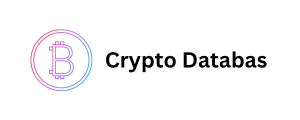The Evolving Landscape of Communication
In the not-so-distant past, cell phone telephone numbers were the cornerstone of personal and professional communication. Exchanging numbers was a way to ensure accessibility and stay connected. Today, however, the communication landscape is rapidly evolving. While cell phone numbers remain relevant, a multitude of channels and considerations have emerged. This article explores the ever-changing world of communication, examining the role of cell phone numbers alongside alternative methods for connecting with people effectively.
H3: The Shifting Significance of Cell Phone Telephone Numbers
Cell phone numbers have undeniably played a crucial role in enabling direct, on-the-go communication. However, their significance is shifting due to several factors:
-
Rise of Messaging Apps: Mobile messaging apps like WhatsApp, Signal, and Telegram offer free, feature-rich alternatives for text and voice communication. These apps often utilize internet data instead of cellular minutes, making them cost-effective, particularly for international communication.
-
Privacy Concerns: Sharing cell phone numbers can raise privacy concerns. With increased awareness of spam calls and Benefits of Phone Number Lists potential data breaches, people might be hesitant to readily give out their personal phone numbers.
-
Integration with Other Platforms: Many social media platforms and professional networking sites like LinkedIn integrate messaging functionalities. This allows users to connect and communicate within these established platforms, eliminating the need to exchange cell phone numbers.
Example: Two colleagues can seamlessly chat via a messaging app or the company’s communication platform for work-related discussions, avoiding the exchange of personal cell phone numbers.
H3: Embracing the Power of Choice: Alternative Communication Channels
The modern communication landscape offers a variety of options beyond cell phone numbers. Here are some effective methods for connecting with people:
-
Email: Email remains a valuable tool for professional communication and can be a good choice for initial contact or detailed messages.
-
Social Media Platforms: Social media platforms like Facebook, Twitter, or LinkedIn can be used to connect with individuals or groups, fostering communication and building relationships. Sending direct messages can be an appropriate way to initiate contact in some cases.
-
Online Directories: For businesses or professionals, online directories can provide contact information like email addresses or website contact forms.
-
Video Conferencing Tools: Platforms like Zoom or Google Meet allow for face-to-face interaction through video calls, ideal for meetings, interviews, or collaborative projects.
Example: You’re trying to connect with a potential client. Researching their company website might reveal a contact form or email address for inquiries, allowing you to initiate communication without needing their cell phone number.
H3: Choosing the Right Channel: Context is Key
The most effective communication method depends on the context and your relationship with the person you’re trying to reach. Here are some considerations:
-
Professional vs. Personal Communication: For professional communication, email or established company communication channels might be more appropriate. For casual interactions with friends or family, messaging apps or social media might suffice.
-
Urgency of the Message: If your message requires an immediate response, a cell phone call might be the best option. However, for non-urgent communication, email or messaging apps can be more convenient.
-
Personal Preferences: Be mindful of the recipient’s preferred communication methods. If you’re unsure, it’s always best to ask or offer multiple options for them to choose from.
Example: You need to reach a close DIGITAL MARKETING LEAD GENERATION COMPANIES friend but aren’t sure if they’re available for a call. Sending a quick message on their preferred mobile app allows them to respond at their convenience.
H3: Communication Etiquette in the Digital Age
As communication methods evolve, proper etiquette remains important. Here are some tips for navigating the digital landscape:
-
Be Respectful of Privacy: Don’t share someone’s cell phone number without their consent.
-
Mind the Time and Frequency of Communication: Be mindful of the time you’re contacting someone, and avoid excessive messages or calls.
-
Maintain Professionalism: When using professional channels like email, maintain a professional tone and proofread your messages carefully.
By understanding the evolving landscape and respecting communication etiquette, you can connect with people effectively and build positive relationships in today’s digital age. There’s no longer a one-size-fits-all approach, and cell phone numbers are just one piece of the communication puzzle. The key lies in choosing the most appropriate channel based on the context and respecting individual preferences.



